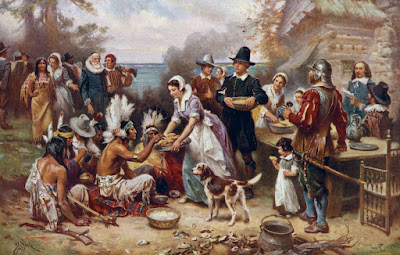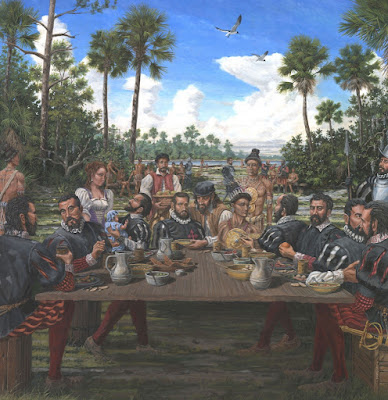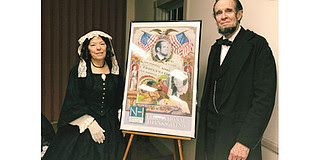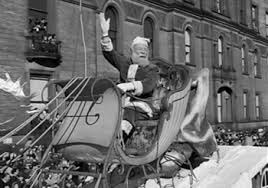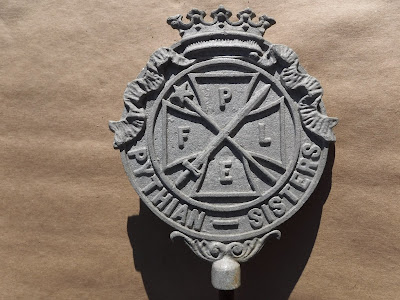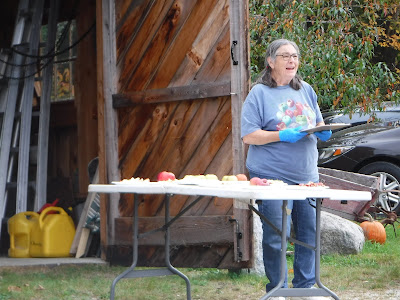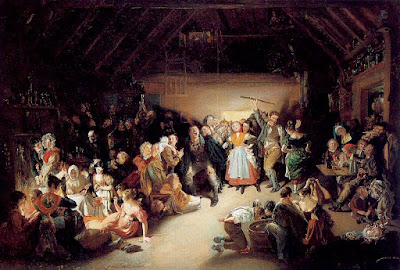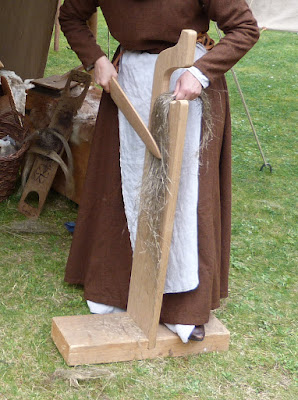We will be sharing our New Hampshire Thanksgiving virtually this year with friends and family in Florida, Virginia and the Netherlands. This is an historically interesting coincidence as all these seemingly disparate places also happen to play important roles in the Thanksgiving story.
Many people imagine a scene like that above when they think of the first Thanksgiving said to be held in 1621 in Massachusetts. For more on this painting see the link here.
However, an earlier Thanksgiving in Florida in 1565 may have looked more like that below with Spanish Conquistadors, top-knotted Timucuans, longleaf pine and sabal palm trees (they may have even eaten part of the palm tree).
For more on this argument see these links here and here. Instead of turkey, this thanksgiving would have more likely included gopher tortoise, mullet and gator.
These images are from a book published in 1591.
Another possible entree was Cocido-Madrileno, a stew made from salted pork and garbanzo beans laced with garlic seasoning.
Even in Florida however, we were taught the Pilgrim version of the holiday in elementary school.
We had pilgrim pageants with construction paper costumes and played "colonial" games. Even if made from toilet paper rolls, these images are iconic and easily recognizable, but inaccurate and incomplete.
In Florida we used the extra large cones of the Longleaf Pine to make decorative turkeys...
The famous sculpture below shows a Pilgrim with a "buckle hat."
The pilgrim buckle hat is featured on signs for the Massachusetts turnpike.
Now for the Dutch connection (everyone say hello to Julia and Joost). The Pilgrim Mayflower trail made an important stop in the Netherlands. FMI see these links here and here.
Misguided Virginians think the first Thanksgiving was held at Berkeley Plantation. They even built a shrine marking the site. FMI see these links here.
Finally for the important New Hampshire connection during the 19th century.
While I think we should all learn more about history from different perspectives, I echo Eric Meltzer's column in today's Conway Daily Sun (see link to his article here) in which he points out the problems with the Mass pike signs illustrated above.
This is a holiday in which we can enjoy a couple days off work and focus on food, parade, friends and family. It has a much less commercial nature to it than many other holidays.
By the way "wheels," my first car was a Plymouth Fury I got from my Grandfather.
So, we will continue to do what we did in Florida, Delaware, Indiana and now New Hampshire. Our family tradition starts with breakfast and the Macy's Parade. Then after dinner, we will watch The Miracle 34th Street.
Our family Christmas holiday does not officially begin until we see Santa at the end of the parade in the film.
On Black Friday (or Plaid Friday as some are now calling it), I will be presenting a program about the history of Thanksgiving for a local community group. I would be happy to do a free outreach program for other local schools and community groups as part of our seasonal "art of the harvest" programs. If you are interested in learning more contact us at the Conway Public Library's Henney History Room.

